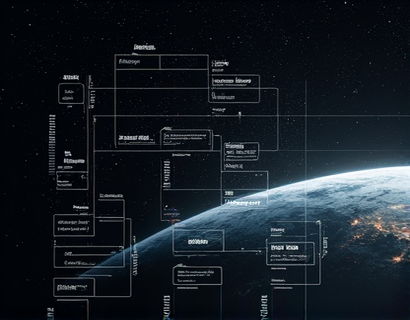Economic Dynamics and Market Opportunities in Modern Ecosystems: Insights for Success
The landscape of modern economies has evolved significantly, transitioning from traditional models to complex, interconnected ecosystems. These ecosystems, characterized by their dynamic interactions and adaptive capabilities, present both challenges and opportunities for economists, business leaders, investors, and industry experts. Understanding the economic dynamics within these ecosystems is crucial for identifying and capitalizing on emerging market opportunities. This guide aims to provide a comprehensive analysis of these dynamics, offering strategic insights to navigate and thrive in the contemporary economic environment.
Understanding Modern Economic Ecosystems
Modern economic ecosystems are multifaceted networks comprising various stakeholders, including businesses, consumers, governments, and technological platforms. Unlike traditional economies that focus on linear production and consumption, these ecosystems are marked by circular flows of information, resources, and value. The interconnectivity within these systems fosters innovation, enhances efficiency, and creates new avenues for growth.
The key components of modern economic ecosystems include:
- Nodes: These are the central entities such as companies, institutions, or platforms that play a pivotal role in the ecosystem. They often drive innovation and set industry standards.
- Links: The relationships and interactions between nodes, which can be formal or informal, direct or indirect. These links facilitate the exchange of resources, information, and value.
- Feedback Loops: Mechanisms that influence the behavior of nodes and the overall system. Positive feedback loops amplify changes, while negative feedback loops stabilize the system.
- Adaptive Capacity: The ability of the ecosystem to respond to external shocks and internal changes, ensuring resilience and sustainability.
These components interact in complex ways, creating a dynamic environment where opportunities and challenges emerge continuously. For instance, a new technological node can disrupt existing industries, creating both winners and losers. Understanding these interactions is essential for leveraging market opportunities effectively.
Economic Dynamics Within Ecosystems
The economic dynamics within modern ecosystems are driven by several key factors, including innovation, competition, and regulatory environments. Each of these factors plays a critical role in shaping market outcomes and identifying potential opportunities.
Innovation is a cornerstone of modern economic ecosystems. It drives productivity gains, creates new products and services, and opens up new markets. Innovations can be technological, business model-based, or process-oriented. For example, the rise of e-commerce platforms has transformed retail, making it more accessible and efficient for consumers while disrupting traditional brick-and-mortar stores.
Competition within these ecosystems is intense and multifaceted. It extends beyond traditional price and quality competition to include innovation, customer experience, and ecosystem integration. Companies must continuously adapt and innovate to maintain their competitive edge. The presence of multiple players, both established and new entrants, fosters a dynamic environment where market leaders can emerge and fall rapidly.
The regulatory environment also significantly influences economic dynamics. Regulations can either facilitate or hinder the growth of certain sectors. For instance, data protection laws impact how companies handle customer information, affecting their business models and competitive strategies. Understanding and navigating the regulatory landscape is crucial for businesses aiming to thrive in these ecosystems.
Identifying Market Opportunities
To capitalize on market opportunities within modern economic ecosystems, it is essential to conduct thorough analysis and stay informed about emerging trends. Here are some strategic approaches:
First, monitor technological advancements. Technologies such as artificial intelligence, blockchain, and the Internet of Things (IoT) are reshaping industries and creating new market spaces. For example, AI-driven analytics can provide businesses with insights to optimize operations and enhance customer experiences.
Second, analyze consumer behavior. Changes in consumer preferences and behaviors, driven by factors like digitalization and sustainability, present significant opportunities. Companies that align their offerings with these trends can capture new market segments. For instance, the growing demand for eco-friendly products has led to the emergence of sustainable brands across various industries.
Third, examine regulatory shifts. Keeping abreast of policy changes and anticipating their impact on different sectors can provide a competitive advantage. For example, the push towards renewable energy due to environmental regulations has opened up substantial opportunities for companies in the green technology space.
Fourth, foster ecosystem partnerships. Collaboration between different nodes in the ecosystem can lead to innovative solutions and shared value creation. For instance, partnerships between tech companies and traditional industries can result in the development of smart solutions that enhance efficiency and sustainability.
Strategic Insights for Business Leaders
Business leaders operating within modern economic ecosystems must adopt a forward-looking and adaptive mindset. Here are some strategic insights to navigate and succeed in these dynamic environments:
First, embrace a culture of innovation. Encourage experimentation and risk-taking within the organization. Establish innovation labs or incubators to explore new ideas and technologies. This approach can help businesses stay ahead of the curve and identify new market opportunities.
Second, build a resilient organizational structure. Flexibility and agility are crucial in responding to rapid changes. This may involve flattening hierarchies, decentralizing decision-making, and fostering a collaborative culture. Such structures enable faster adaptation and more effective problem-solving.
Third, invest in data and analytics. Data-driven decision-making is essential for understanding market dynamics and consumer behavior. Implement advanced analytics tools to gather and analyze data, providing insights that inform strategic decisions.
Fourth, prioritize sustainability and social responsibility. Consumers and stakeholders increasingly value companies that demonstrate a commitment to environmental and social governance (ESG). Integrating sustainability into business strategies can enhance brand reputation and attract a broader customer base.
Investment Opportunities in Modern Ecosystems
Investors looking to capitalize on the opportunities within modern economic ecosystems should focus on sectors that are experiencing significant transformation. Here are some key areas to consider:
First, technology-driven sectors such as fintech, healthtech, and edtech are rapidly evolving, driven by technological advancements and changing consumer needs. Investments in companies that leverage AI, big data, and cloud computing can yield substantial returns.
Second, renewable energy and green technology are gaining momentum due to global efforts to combat climate change. Companies involved in solar, wind, and battery storage technologies, as well as those offering sustainable solutions, present attractive investment opportunities.
Third, digital transformation across traditional industries offers numerous investment prospects. Companies that successfully integrate digital technologies to enhance operations and customer experiences are likely to outperform their peers. Sectors such as manufacturing, retail, and logistics are prime areas for digital transformation investments.
Fourth, emerging markets continue to offer significant growth potential. Economies in developing regions are rapidly modernizing, creating opportunities in infrastructure, consumer goods, and services. Investing in companies that understand and cater to the unique needs of these markets can be highly rewarding.
Conclusion
Modern economic ecosystems present a complex yet promising landscape for those willing to understand and navigate their dynamics. By embracing innovation, fostering collaboration, and staying informed about technological and regulatory changes, professionals can identify and capitalize on emerging market opportunities. Whether you are an economist, business leader, investor, or industry expert, the insights provided in this guide can serve as a foundation for strategic decision-making and success in the dynamic economic environment of today.










































